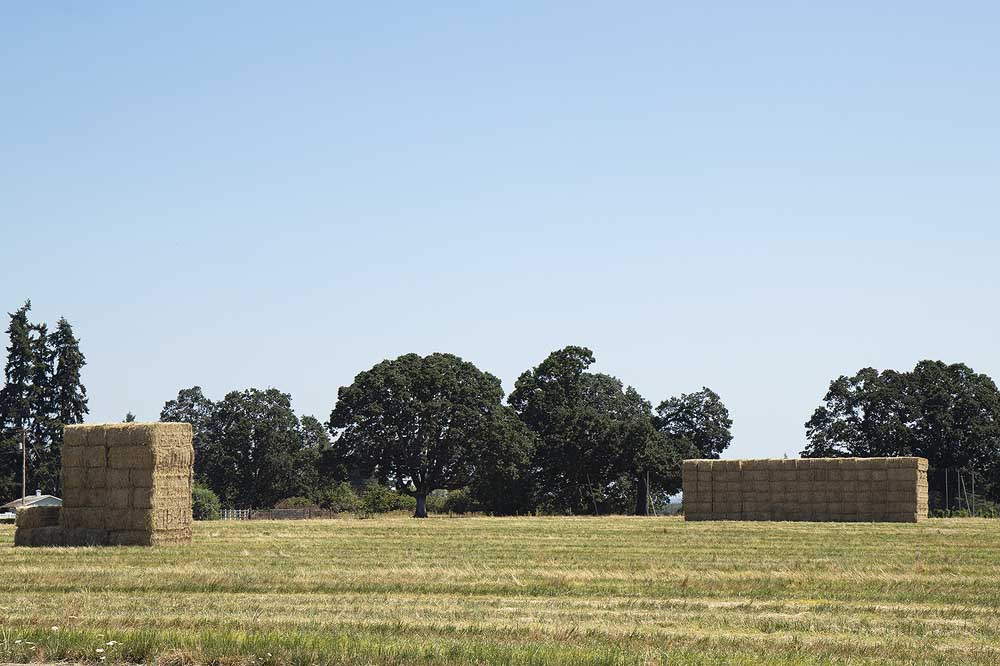Nursery crops top list of Oregon commodities
Published 8:00 am Wednesday, September 30, 2020

- Hay is the No. 2 crop in Oregon by production value, according to a ranking by the state Department of Agriculture and the National Agricultural Statistics Service. The nursery industry remains No. 1.
PORTLAND — The Oregon Department of Agriculture and USDA National Agricultural Statistics Service have released their annual list of the state’s top 20 commodities, and while several crops swapped places from the 2018 rankings, greenhouse and nursery growers remain No. 1 by a wide margin.
Estimates from ODA show greenhouse and nursery products brought in $955.1 million last year, compared to $995.9 million in 2018.
Hay came in a distant second place at $674.2 million, beating out cattle and calves, which fell one spot to third place.
Dave Losh, Oregon state statistician for NASS, said hay production value gained $83.8 million from 2018-19, with a 10% boost in overall yields. Production of non-alfalfa hay — including native grasses, Timothy hay and oat or triticale mixes — saw particular growth, Losh said.
The previous record for hay was in 2016, at $661.3 million. Otherwise, Losh said this year’s top 20 list contained few surprises.
Milk and grass seed flipped fourth and fifth places, respectively, while wheat stayed put at sixth place. Winegrapes came in seventh, while increasing in value from $208.7 million in 2018 to $237.7 in 2019. Potatoes, blueberries and pears rounded out the top 10.
Rankings fluctuate based largely on commodity prices for a given year, Losh said. In the future, he expects hazelnuts may see a major jump. Growers are expected to harvest a record 71,000 tons in 2020, though Losh said global prices have been depressed in recent years due to several factors, including the value of currency in Turkey, the world’s largest hazelnut producer.
Hazelnuts ranked 13th in 2019, at $84.4 million.
“We should see, as a general trend, hazelnuts come up,” Losh said.
Hemp, which was legalized in the 2018 Farm Bill, is still conspicuously absent from the list. Losh said the USDA is still coming up with a program for tracking the value of hemp, which is complicated due to the crop’s versatility and budding markets.
Additionally, the regulatory framework for hemp under the USDA and Food and Drug Administration is still coming into focus.
“Our agency conducted some interviews of hemp growers, testing out some interview questions,” Losh said. “What we found is it is a really complex crop at this point, because of the end uses.”
According to Oregon State University Extension Service, there were 25,273 registered acres of outdoor hemp as of Aug. 21. That is significantly less than 2019, when the state had an estimated 63,000 registered acres.
ODA says it expects hemp will be included in its rankings “in the next couple of years.”
While the value of agricultural commodities is impressive, Losh said it is important to note that costs for farmers are also increasing. Based on data compiled in the 2017 Census of Agriculture, Oregon producers reported more than $5 billion in costs, including more than $1 billion in labor costs alone.
“That’s the other side of the balance sheet,” Losh said. “There is a lot of risk in farming, and certainly rewards as well.”
The Oregon Department of Agriculture and USDA National Agricultural Statistics Service have compiled the state’s top 20 agricultural commodities by value for 2019.
1. Greenhouse and nursery — $955.1 million
2. Hay — $674.2 million
3. Cattle and calves — $625.1 million
4. Milk — $552 million
5. Grass seed — $517.4 million
6. Wheat — $282.9 million
7. Winegrapes — $237.7 million
8. Potatoes — $198.8 million
9. Blueberries — $134.2 million
10. Pears — $108.7 million
11. Onions — $108.4 million
12. Christmas trees — $104.4 million
13. Hazelnuts — $84.4 million
14. Cherries — $75.2 million
15. Hops — $71.6 million
16. Dungeness crab — $67.6 million
17. Eggs — $56.7 million
18. Mint for oil — $40.5 million
19. Apples — $38.7 million
20. Sweet corn — $38.1 million






